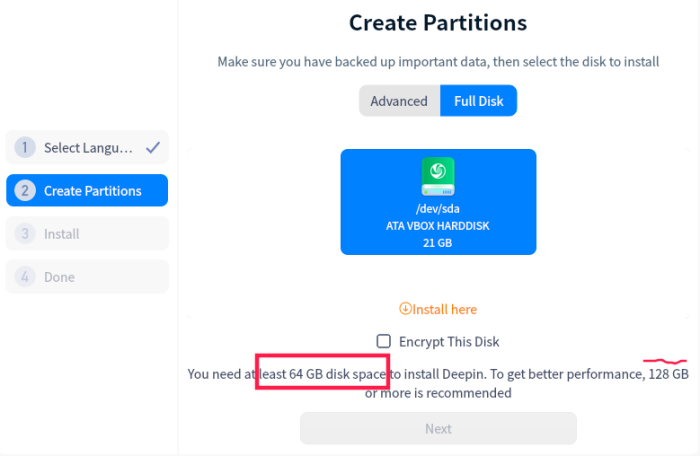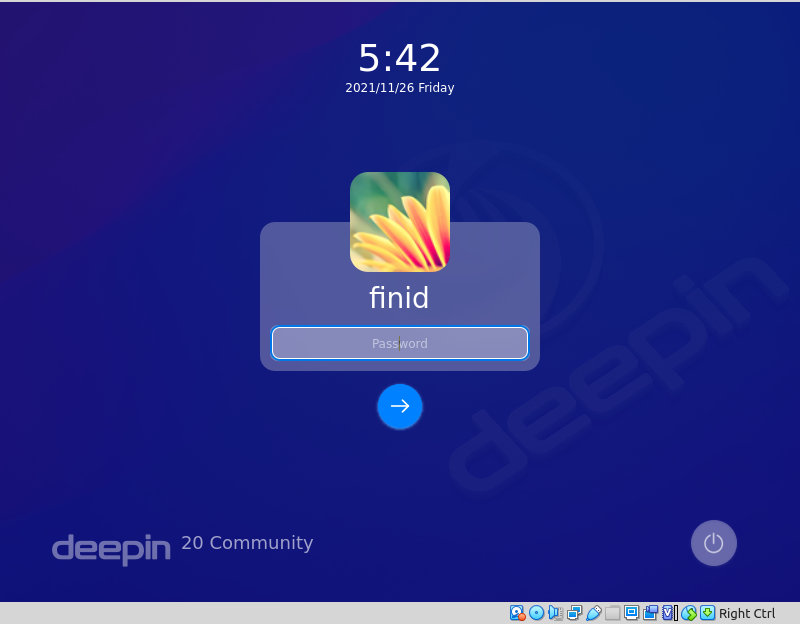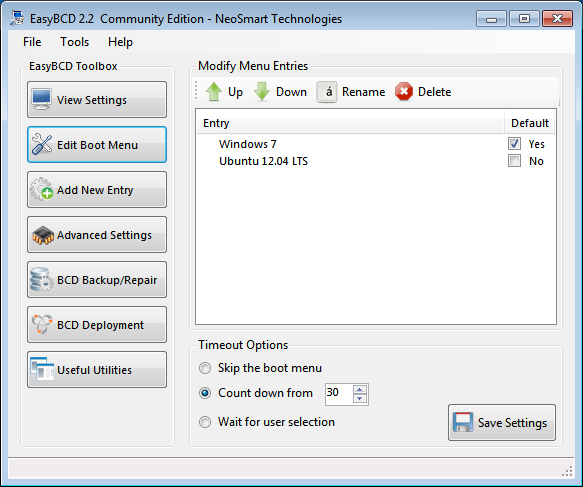Deepin is a desktop Linux distribution with roots in China. It is based on Debian, but ships with its own graphical interface called Deepin Desktop Environment and a set of Deepin-developed tools to go with it. The last version I installed was from 2015, so since I’m gradually coming back to writing for this blog, I decided to test drive the latest edition – Deepin 20.3, which was released on Nov. 25.
For me that means installing it in a virtual environment using VirtualBox. For such installations I typically assign the virtual disk 20GB of disk space. And so it was with Deepin 20.3. But that didn’t end well because at some point the installation failed, with the message shown in Figure 2: “You need at least 64 GB of disk space to install Deepin. To get better performance, 128 GB.”

Figure 2: Deepin 20.3 installation aborted message.
That’s shocking! What needs to be installed that requires that much disk space?
The answer is shown in Figure 3. I can understand 2GB for Swap, but 2GB for /boot? That’s about 1.5GB more than you’ll find assigned to /boot on any other Linux distribution. But that’s even minor. The real eye opener is a backup partition for / and a recovery partition of 12GB. Those are not what you’ll normally find on any Linux distribution. So the generous storage allocation to /boot, the backup root partition and the recovery partition combine for about 30GB more than other distributions never bother with.

Figure 3: How disk space is assigned on an installation of Deepin 20.3.
But at least now I know where a big chunk of that disk space required for “better performance” comes from. Of course if you have to install Deepin 20.3 and you don’t have that much disk space to spare, you can always get around that by manually partitioning the disk.







